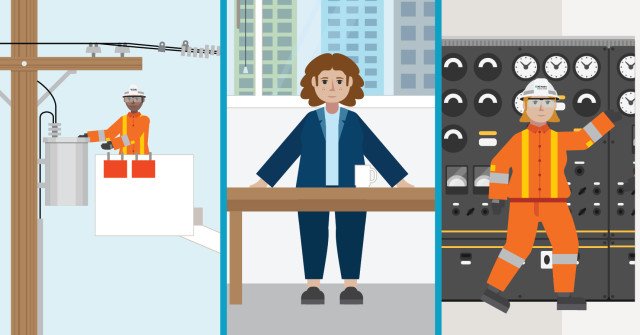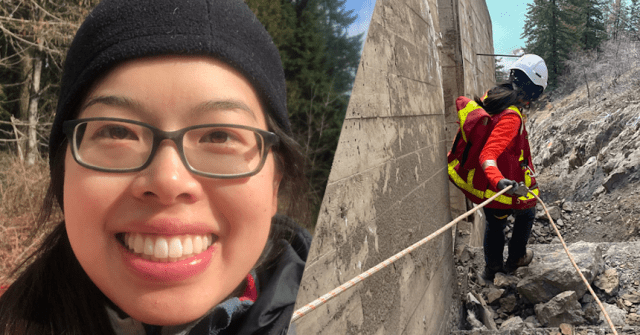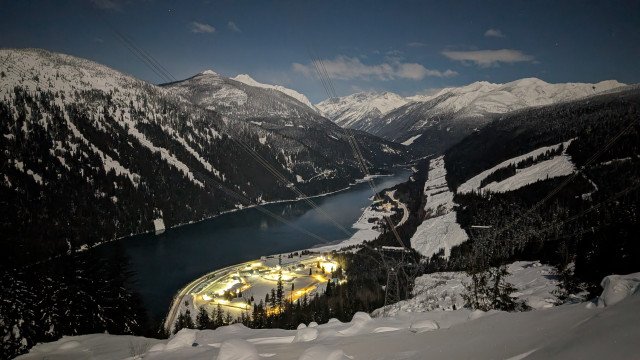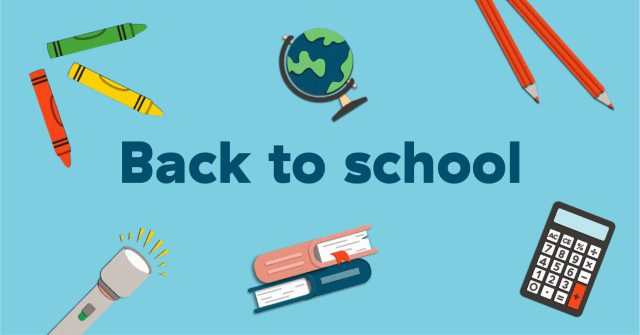This year for Earth Day, we created an ambitious challenge called Our Power, Our B.C. inspired by earthday.org’s theme for this year. We wanted students to think about their province, where their electricity comes from, and their own power to shape the future of energy.
We opened registration for K-7 teachers to join the challenge and receive the activity package including the instructions, printouts, and two large poster maps to work with. The caveat was that we asked to receive updates with photos and descriptions of how the projects were going. The poster kit shipped to 130 teachers across B.C. to reach from Vancouver up the coast to Prince Rupert, up north to Fort St John, and as far east as Fernie.
There was lots of work involved in finishing the activities, plus we had delays delivering materials to participants. Even so, we received many wonderful submissions showing the engagement, hard work, and creativity that students applied to the activities. In this post we sum up each challenge and share testimonials from teachers about how students learned and applied important lessons about their B.C. throughout the challenge. We also announce the winner of the prize draw.
Challenge 1: Discovering B.C.
Challenge 1 introduced students to the concept of maps, the diverse geography of B.C., and an understanding of the Indigenous territories that our province resides on. This was an opportunity to engage students by connecting with concepts they’ve learned before and their own understanding of their own community, such as the mountains and rivers that they already know.
It was exciting to see how teachers introduced the challenge by connecting with what students already know. For example, Elan Mariner’s class connected strongly with mapping power stations because their community, Mission, has a well-known powerhouse at Stave Falls. Colin Naylor had students make mind maps relating to what they already knew about Earth Day. Stephanie Read’s students coloured in the large map and identified regions in their smaller maps, complete with animal stickers. Bharruttee Deehoo’s students explored clean energy and how power is made in different locations while placing stickers to track their learning.
Kathy Burtman shared that her students had been learning about the Indigenous nations whose land they live on, which “sparked a lot of curiosity”, and that when using the large map in the activity “students were able to make strong connections and were eager to share their insights with others.” Genevieve Chong shared that her class “had a blast and went above and beyond finding information about various places in B.C.,” and they were so proud of the map they created that they suggested we use it for next year’s assignment.
Clara Wilhite’s class engaged closely using the map as a starting point:
“We had a great conversation on how we are close to the Cascade Mountain Range here in Chilliwack and how that impacts us. My students enjoyed talking about the different types of borders and how there is a difference between political and physical. I had the students use the internet to help them to locate what they thought were important landmarks in B.C.”
Maps are a complex topic worth unpacking, because on one hand they represent arbitrary borders and labels to describe complex places, but on the other hand they are very powerful for framing a region and a lens to see it through. By inviting students to edit a map of our province and their own region within it, we unlock their power to communicate their own observations and priorities through the medium.
Challenge 2: Re-imagining B.C.
In the second activity, the class talks more about waterways, the water cycle, and how we generate electricity from hydropower. At the same time, students think about the shape of their own community, including mundane things like the stores and community buildings, or exciting things like landmarks and local wildlife, and try to draw it from memory. Then students have a chance to talk about what other things they would like to see in their region, including green spaces for conservation. These pieces together get students thinking about the landscape around them, which they might take for granted as being fixed, and start to imagine changes they want to see.
Denise Tung’s class was “very surprised about how many stations and power generators there actually were,” and noticed how certain types of power generation was “clumped in specific areas” indicating that things like dams rely heavily on local geographical features. They also had a conversation about the landscape of other countries, especially where their families are from. Genevieve’s class put a lot of effort into making a city plan by consensus, factoring in important community spaces like libraries, fire stations, cafés, beaches, and schools. They even factored in density and proportionality, wanting to avoid urban sprawl.
Cara Wilhite’s class had been to the Stave Falls Visitor Centre at the start of the year, so this activity was a chance to come full circle thinking about power generation and how that connects to the community. Stephanie’s class drew detailed neighborhoods with a list of things they want to see included. Jessica Chan’s class found that placing stickers was a helpful engagement point to think about places: “The students loved drawing what they see and want in their neighbourhood, such as bubble tea shops, an airport, T&T, the Canadian flag, bears, buses, people and schools.” They also drew a dam, realizing the importance of factoring energy into everything else.
Bharuttee started a conversation about daily life through looking at neighborhoods:
Our class explored ways we can care for the Earth through everyday choices. We had a wonderful discussion about activities we can enjoy in our neighbourhood that don’t use much energy—like walking, biking, playing at the park, or spending time in nature . . . We also talked about the importance of nature in Indigenous cultures, and how it is deeply respected as a source of life and learning. The class was interested to learn that Mill Lake has an Indigenous name, which helped us connect our learning to the land we live on. Students then drew their own neighbourhoods, including green spaces, clean energy, and symbols of care and respect for the land.
By thinking about the shape of your local neighbourhood, and comparing it to other communities or to our concept of an ideal neighbourhood, young students can learn that they are imperfect places shaped by decisions we make and the priorities we choose. Every region has its strengths and challenges, although our province is blessed with so many great attributes—both natural and built. It’s never too early to start imagining what we want to preserve or change for the future of our communities.
Challenge 3: Building B.C.
In the third activity, students share what’s on their neighborhood maps and the class creates a list of features, plus a list of things that they want to see more of. Then they identify the major cities on their regional and provincial maps, and proceed to mark either where they’d like to see more community growth or what they want to see added onto the maps. Optionally, the classes can also create dioramas to express their neighborhood in 3D.
Helen Chambers’ class went into detail labeling maps with “First Peoples' traditional territories, rivers, lakes, glaciers, major cities, wildlife, parks, and power sources. Students found this a complex task but persevered to get our Provincial Map done! Students also worked on their community designs, creating their ideal communities whilst also considering how to honour the land and consult with and show respect to the Indigenous peoples who have been stewards of that land since time immemorial.”
Cara challenged her students to consider some of the complexities of their city:
We did a brainstorming session ahead of their map making and talked about who should fund what. It was interesting to get 12 and 13 year olds to think about the various things a city needs and who is responsible for what. My students thoroughly enjoyed making maps of an ideal city. A few wanted their cities to be walkable to reduce CO2 emissions. Some even included a BC Hydro dam to power their cities.
Genevieve’s class worked hard, both on the crafting of dioramas and the complexities of city planning: “We learned how to plan communities sustainably and realistically. Then we built buildings on top of that, practicing our creativity and arts and crafts skills. This was a lesson in teamwork, as there were many conflicts, especially during planning.”
We were amazed to see the unique ways that students tackled the dioramas. Students in Colin’s class not only made finely crafted dioramas, some of them used 3D modelling software to create a computer rendering of their ideal neighborhood! Likewise, Kara Crowley’s class used Minecraft to create the school and the surrounding community.
Bharuttee took some time away from the maps themselves to inspire conversation and hands-on play:
We spent time playing outside without using any electricity — enjoying simple, energy-free games like tag, nature walks, and group play at the park. Before going outside, we had a class discussion about how we can have fun without screens or devices, and how these small choices help care for the Earth. Our French Immersion class created a diorama of the Fraser River and some of the animals that live in and around it, like salmon. We learned that the river is very important to the Stó:lō people, who are known as the ‘people of the river.’ We talked about how we can take care of the river by not littering, cleaning the riverbanks, and spending time in nature without electricity . . . After our outdoor time, students drew pictures and completed a short reflection about how it felt to unplug and enjoy nature. It was a joyful and grounding experience that reminded us of the simple, meaningful ways we can protect our planet.
As participants experienced, city planning is a very complex challenge, especially when balancing local interests, providing necessary resources, respecting traditional land uses, and connecting everything to wider regions in the province. But students may have noticed that no individual person accomplished it all—it was a group effort. The important thing is to advocate for what matters to you. The freedom to play with concepts in your own map or model is an important way to inspire students to engage with their community.
Challenge 4: Powering B.C.
In the fourth activity, students discuss energy needs for their communities in more detail. They look at nearby powerhouses or stations, and they research the pros and cons of the different power generation options that exist.
Elan and Cara’s classes both researched different forms of energy generation and shared them with the class, through poster boards and presentations respectively. Genevieve’s class modeled a hydroelectric dam and power station, but they also discussed “how wind and solar energy would also play vital roles” in their ideal communities. Colin’s students each wrote a paragraph on the importance of planning for a sustainable future.
Helen Chambers’ class thought big and bold about ideas to support the sustainable future and conservation that the students value. For example, one imagined city was placed underground so as to preserve traditional lands and waterways above ground, and is “powered by harnessing electricity form lightning!” Students also considered inclusivity, density, and renewable energy sources such as hydroelectric power in their designs.
Daryl Wyatt’s class connected the activity to their previous work on the UN SDG’s:
Our class has been engaged in the Sustainable Community Challenge, designing future cities that address real-world issues through the lens of the United Nations Sustainable Development Goals (SDGs). Students worked in teams using Minecraft Education to creatively model sustainable solutions for energy, housing, transportation, waste, and more . . . the project sparked deep learning, collaboration, and powerful conversations about what a truly sustainable future could look like.
When thinking about the future, students need to channel both realism and idealism. Thinking about energy needs helps to think more concretely about shaping a sustainable future. Those of us who played the city-building game SimCity 2000 may fondly remember placing hundreds of wind turbines or fusion reactors and dusting our hands having solved the local energy crisis. Thinking about real-life energy solutions helps to imagine what can be advocated for. At the same time, dreaming big allows the imagination to wander and test the limits of what’s possible—or think about how to make big dreams possible.
Prize draw winner
Out of everyone who completed the challenge and submitted the work from students, one teacher was randomly selected to win a Domino’s Pizza gift card and a set of Earth Ball toys for their class. We are excited to share that Bharuttee Deehoo won the prizes for her class at Centennial Park Elementary! We hope her class enjoys a fun pizza party to celebrate their hard work, and that the Earth Balls they take home remind them of everything they learned throughout.
Thank you!
We want to say a big thank you to all the teachers and their students who participated in the challenge. We appreciated each and every submission. Your classes put a lot of work into the activities, and many teachers spent a lot of time submitting that work to us. Thank you for your commitment to this challenge, and your patience as we sorted out shipping delays which shuffled your schedules. We also appreciate all the teachers who signed on but weren’t able to submit the full challenge due to time constraints, we still appreciate your engagement and enthusiasm.
We did our best to name as many classes and show as many pictures as we could, but there was even more great work shown to us. We can’t wait until the next opportunity to share activities and materials with you. You can always reach out to us with thoughts and feedback about what you’d like to see more of in the future.





